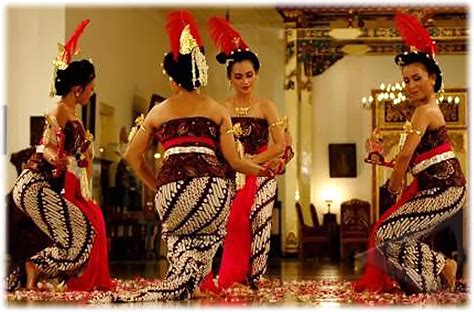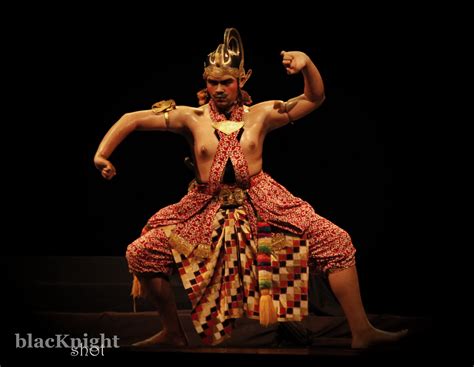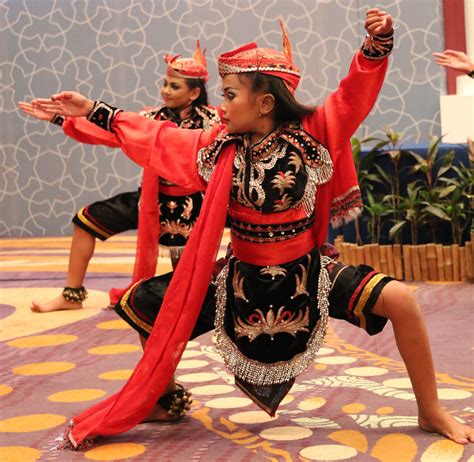Hey guys! Welcome to “Lexie’s interest time” where we talk about things that interest me! Today we are talking about Javanese court dance, especially the different male and female styles, and how they present differently in the body when danced. This difference has a lot to do with the roles of males and females in Javanese society. I have danced both male and female style dances and they present very differently both in emotion and body feel. This can be easily explained by the inequalities and the differences in the roles between these genders. These roles are enforced by the dances, not the other way around. Which I find to be interesting because I thought that the characteristics of the dance would come from a place of truth not from a desire (but to be honest, gender roles never really come from a place of truth). Women are given the narrative of obedient, poised, refined, and pleasant beings with the ability to control their emotions and desires. Men are given the narrative of the dominant, strong, and in charge beings who also must restrain themselves to gain spiritual power.

This is evident when we consult the different styles. For women, the dance is very slow-moving and controlled. The women stand grounded with their thighs bent and their feet close together. This stance must be very controlled or else the dancer will be unbalanced and struggle during the performance. The dancers’ hands are supposed to be delicate but not fragile like an orchid. Beautiful but strong. These opposites must be embodied in a woman. Also, aside from the physical movements, women must be graceful and pleasant. Their bodies should flow like water and their faces should remain a constant mask of contentment. When I have danced this dance I have found it very hard to control my body in the way this dance requires. So, therefore, women are thought to be able to self-control better than men and this dance is a sort of testing of that belief. Not just their ability to control their bodies, but also their emotions and state of being. To do this dance I was required to contain my body in this tight stance and also remain pleasant and poised. It is a lot to ask these dancers to accomplish but they do amazingly; effectively exceeding the expectations on this test of their abilities in the dance. Women are enforced to this standard of being all of these qualities that likely do not come naturally to them. Like for example, I am definitely not obedient and I do not have the ability to control my emotions very well. I am very expressive and do not obey everyone’s wishes (though I am going to do whatever you ask if you give me food and love). Even though there are so many women that do this dance performance, it is unreasonable to ask women to be held up to this unrealistic standard. It is a part of their cultural norm to not express emotions, but as an outsider, it is easy to see this as a robotic and humanity-lacking way of life. So I find it very difficult to maintain a pleasant exterior while dancing Javanese court dance (especially since my face is screwed up in concentration making sure I get the steps right).

Male style dance is similar to the female style dance in that it also enforces gender roles upon men; the difference is that the gender expression they enforce is very free and not as constricting as female expression. When I practiced and watched male style dance, I realized just how different it feels in comparison to female style dance. Male style is way freer moving and takes up more space. In the female style, the movement of the limbs is constrained to the body frame. But in a male style, there are all sorts of arm and leg extensions that go way beyond the body frame. It is also way more fast-paced and there is a lot more movement of the legs and shiting back and forth. There is also a picking up of one knee and holding it up. This would never occur in the female style. The closest the women get to lifting their feet are in the tapping of the foot after srimpet. Culturally, this dance would then signify men’s strength and power in comparison to the docility and delicateness of women’s role as portrayed in their dance style. After having practiced the woman style for about a month or so, when I danced the male style dance it felt so much more freeing. I was used to being constricted and moving slow, but being able to have a wider range of motion for my limbs and faster movements made it a much more enjoyable experience. To me, this signifies that men can basically do what they want as long as they remain poised and restrain certain behaviors. I mean, even though they have more range of motion they are still dancing and they still have rules to follow. An example of this expectation for men to restrain themselves is when they are presented with flirtation. Women will “test” men by flirting with them to see how well they are able to resist reacting to this temptation. Depending on if they resist the temptation or not, this determines the man’s ability to protect or gain spiritual power. This process also encourages men to have individual self-control. So even though it is more emphasized for women to have control over themselves, it is still expected for men to control their temptations and emotions. The dance reflects this. Men can be freer but they still have to be in control of themselves and their bodies; they must be poised but powerful in their movements.

When realizing how different, and how much better, male dance feels on my body, it is easy to see why so many women prefer to participate in the male style of dance. There are many Javanese women that choose to dress and perform the male dance. Women that dance this style embody feminine masculinity that, if I had to choose, I would definitely prefer over femininity. They dress up and appear as men with mustaches, beards, and male costumes but they also typically wear feminine style makeup underneath and their movements are more graceful than men dancing male style. This allows women to still be women but have much more freedom in their abilities, at least while they are on stage. It seems to be a momentary escape from the constrictions that femininity places on these Javanese women which, I can assume, is a relief. Thank you for listening today and I hope you found this as interesting as I did! See u next week!
Written by Lexie Allen
Categories
Calendar
| M | T | W | T | F | S | S |
|---|---|---|---|---|---|---|
| 1 | 2 | 3 | 4 | 5 | 6 | |
| 7 | 8 | 9 | 10 | 11 | 12 | 13 |
| 14 | 15 | 16 | 17 | 18 | 19 | 20 |
| 21 | 22 | 23 | 24 | 25 | 26 | 27 |
| 28 | 29 | 30 | 31 | |||